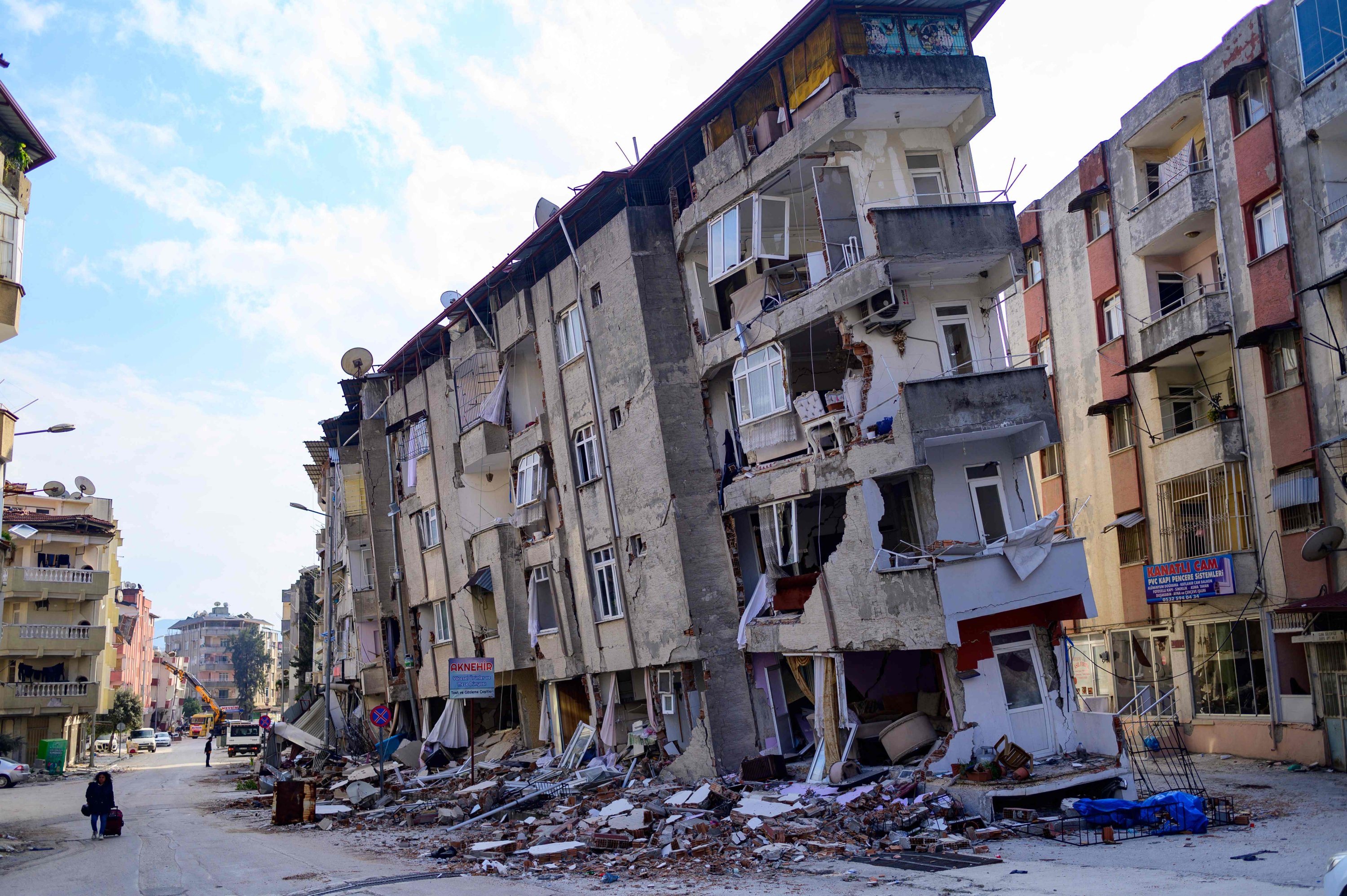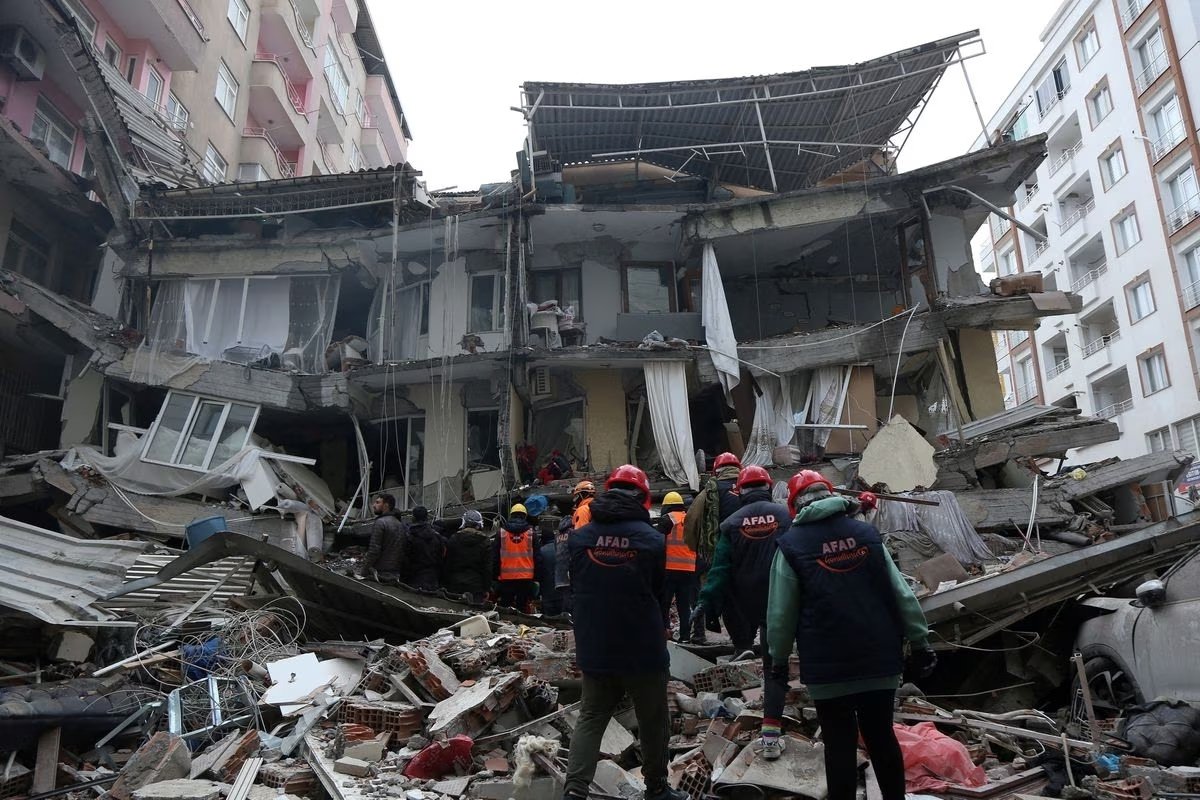© Turkuvaz Haberleşme ve Yayıncılık 2026
In American writer William Faulkner’s “Manhunts and Searches,” most of the time, “facts” melt into “fiction.” His man, escaping or following, feels his feet seem to stray across the earth without solidity until he falls. Until only a week ago, our world, although at times it had its regular topsy-turvy like any other world, had its strength. We had our share of petty politics, but we knew that we were not straying like Faulkner’s man and were not falling.
After a short, cold and useless semester break, youngsters and their high-school sisters and brothers had hit the sack on Sunday night to go to school the next day. But the next day, in the middle of the night, while sleeping in the warmth of their bed for an endless 65 seconds, they were buried in the earth. It has been a week, and like Faulkner’s heroes, our days merged into each other, skipping nights; nights become an endless span without daytime.
Yes, we know Türkiye is prone to devastating earthquakes. The young republic laid its eyes on the ugly and ruthless face of earthquakes 84 years ago in Erzincan. Then-President Ismet Inönü, who had visited the town a fortnight before, could not recognize it when he returned four days after the disaster: 33,000 people had died, and more than 100,000 people had been injured. The Feb. 6 tremor was the strongest to shake the region in more than 100 years, and so far, at least 30,000 people have been found dead across Türkiye and Syria. In addition, authorities estimate that millions are homeless. According to experts, the death toll could double if the number of collapsed buildings could be taken as a reference.
Two significant earthquakes – nine hours apart and measuring 7.8 and 7.5 on the magnitude scale – flattened buildings of all kinds and killed thousands in both affected countries. Experts wonder why so many modern apartment blocks crumbled to dust. We heard geologists and construction engineers for years on end that modern construction techniques would mean buildings can withstand quakes of this magnitude.
Regulations decreed following the very first disaster of the republic for the last eight decades were supposed to ensure these modern construction techniques were observed in new buildings.

Some of the buildings were constructed as recently as last year. Their advertisements are still on the real estate agencies’ websites, saying the buildings were built in compliance with the latest earthquake regulations, with all materials and artistry of first-class quality. But they were largely destroyed. We have images on social platforms showing some buildings laying flat on the ground without any visible damage to the walls, floors, ceilings, windows, balconies and doors. As if some mighty hand laid a Lego toy house on its side. One block in a housing complex with several apartments constructed by the same company was reduced to rubble, while all others stood intact. In another case, two apartments among the hundreds of others, built by the same developer, trapped hundreds of people in the rubble.
Almost all broadcasters, national and international, kept asking the same question to construction experts and geologists: Why did so many buildings collapse while some buildings remained intact? Some of those still standing were built before the final construction regulation drafted after the 1999 İzmit earthquake of a catastrophic magnitude of 7.6. It struck northwestern Kocaeli province, causing massive damage and more than 18,000 deaths.
We will be searching for answers to this question, and I am sure different people will have other solutions. Some will say, as they already do, that the intensity of this earthquake was violent enough to bring even the well-constructed buildings down. Some are already objecting to it. Professor David Alexander, an expert in emergency planning and management at University College London, says, “In most places, the level of shaking was less than the maximum, so we can conclude out of the thousands of buildings that collapsed, almost all of them don’t stand up to any reasonably expected earthquake construction code.”
Turkish construction regulations were tightened in 2018. The Erdoğan governments started and implemented urban renewal projects. Some of them have graduated to “urban gentrification processes.” City neighborhoods have been developed over a short time, changing from low to high value, thus attracting an influx of more affluent residents and businesses. There were large retrofitting projects for the existing buildings so that they would retain their competitive deal in the market.
Then why are search and rescue teams trudging along mountains of debris in those affluent residencies and villages? In countries as prone to devastating earthquakes, as Türkiye is, millions of people live in densely populated high-rise buildings without such catastrophic results as Türkiye does. Japan, for instance, despite the country’s long history of devastating earthquakes, does not suffer from such catastrophes.
Türkiye now has a modern Disaster and Emergency Management Authority (AFAD) and a modern seismography network implementing the latest “solar system geometry surveys” and publishing accurate maps of fault zones in the country. As a result, Turkish and European seismologists know almost every inch of the landscape where disasters could happen.

Then, why has Türkiye, as if in a Faulknerian drama, been living the last week as if “facts” have been melting into “fiction”?
No, it is not that the earthquake was a kind that happened once in two centuries; neither was it releasing a tension that had accumulated in this or that fault zone for the last 600 years. Instead, the disaster was on an enormous scale simply because of the failure to enforce building regulations. Moreover, not only building regulations, but we also seem to fail to implement most of the rules in other areas.
However, the enormity of this “big one,” perhaps the sheer numbers of the dead, the injured and collapsed buildings, and the social and political issues that this massive number of people who will be displaced within the country, in short, the aftermath of it is supposed to teach us one big lesson: To know when the disaster is going to hit and the ways to prevent it are not enough; construction safety requirements should be strictly implemented.
Governments should stop providing periodic “construction amnesties” (which have been issued by all governments since 1946); local municipalities should stop issuing residency certificates to buildings exempting them from implementing new and strict regulations. Instead, the builders pay a fee to get the temporary residency permit for structures built without the required safety certificates.
There was a draft in the dockets of the National Assembly for a new construction amnesty before this quake hit; I hope it will never be passed into law.
One last point: We must erase the word “rüşvet” (oiling officials’ palms) from our lives.
Shall we do it?
